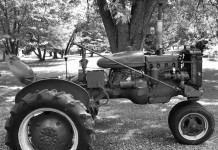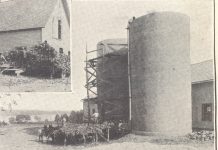I’ve been reading about how people traveled long distances during the early decades of the 19th century before the development of the railroads.
In the years after the War of 1812, the United States was overrun with tourists from Europe — especially from Great Britain. The British seemed driven to see for themselves this upstart country, and erstwhile colony, which had recently defeated the vaunted British army and Royal Navy.
Since New York City was the main port where tourists disembarked, the new Erie Canal across New York was a prime tourist attraction and the roads were terrible, most of these folks traveled by steamboat up the Hudson River and then rode the canal boats west.
Culture shock
This little story is about the impressions of some of the English visitors who rode these boats — remember, poor didn’t travel as tourists, although many of them came to America, most hoping to find work and better themselves from the grinding poverty of working class England — no, the people who traveled the boats and wrote about it were the wealthy, most of whom were used to genteel surroundings.
You get a sense of the cultural shock these folks experienced as they came into contact with the raw frontier ways of the United States. Many of these travelers left written accounts of their travels, many of them not very flattering, that seemed to sell well back in their home countries to people who couldn’t make the trip themselves.
Aboard the North America. Built in 1827, the North America was one of these Hudson River steamers, 218 feet long and 30 feet wide, weighing 497 tons and powered by two wood-burning, walking beam engines, she was one of the fastest boats on the New York to Albany run.
An English man wrote of the ship’s interior in 1830:
“The accommodation consisted of two cabins, [about] 150 feet long. The sternmost is sumptuous, fitted up with mirrors, ottomans, and other luxuries. The other, was very inferior in decoration. It seemed a sort of tippling shop, and contained a bar, where liquors of all kinds, from champagne to small beer, were dispensed to such passengers as have the inclination to swallow, and the money to pay for them.
“The sides of each of these cabins were lined with a triple row of sleeping berths, and as the sofas and benches were convertible to a similar purpose, I was assured accommodation could be furnished for about five hundred.”
Many genteel travelers were unimpressed with the idea of communal sleeping. One British actress, Fanny Kemble, not exactly a shy person, wrote that she refused to undress in “the horrible hen-coop allotted to female passengers,” and spent an uncomfortable night on a tiny bunk wearing her dress, petticoats and shoes.
Plenty to eat
Apparently the food was plentiful and good, although the rush to the tables when the dinner bell rang was great.
Another English tourist wrote of breakfast and dinner on the North American, where each meal was 50 cents, no matter what one had.
“Both meals were good, and very liberal in point of quality. The breakfast consisted of the same articles that had been daily set before us at the city hotel, with a large supply of omelettes in addition. The equipage and the whole style of the thing good.
“The people seem universally to eat more animal food than the British are accustomed to do, even at breakfast, and to eat quickly. “The dinner consisted of two courses, 1. Of fish, including very large lobsters, roast-meat, especially roast-beef, beef-steaks, and fowls of various kinds, roasted and boiled, potatoes and vegetables of various kinds; 2. Which is here called the dessert, of pies, puddings, and cheese.”
What? No wine?
“Pitchers of water and small bottles of brandy were on all parts of the table. A glass tumbler was put down for each person; but no wine glasses, and no wine drank.
“Wine and spirits of all sorts, malt liquors, lemonade, and ice for all purposes, may be had at the bar, kept in one of the cabins. There is a separate charge for everything procured there; but no separate charge for the brandy put down on the dinner-table, which may be used at pleasure.
“The waiters will, if desired, bring any liquor previously ordered, and paid for to them, or at the bar, to the dining-table.
“Dinner was finished, and most people again on deck in less than twenty minutes. They seemed to me to eat more at breakfast than at dinner. I soon looked into the dining-room and saw that there was not a single straggler remaining at his bottle. Many people, however, were going into and out of room where the bar is railed off, and where the bar-keep was giving out liquor.
“The men of colour who waited at table were clean-looking, clever, and active — evidently picked men in point of appearance.”
Smelly spit boxes
One woman wrote that the heat and “the known vicinity of a compressed crowd, lying packed like herrings in a barrel” had ruined her night’s sleep.
She also complained about the 16 Presbyterian ministers on board who were travelling to convention of some sort and who all day “inflicted their devotions on the other passengers in a most unjustifiable manner.”
Another thing that irritated fastidious European travelers was the proliferation of smelly “spit boxes,” or spittoons. In a day when most American men chewed tobacco and spit copiously, Europeans would rather sniff a pinch of dried and powdered snuff and then sneeze daintily into their kerchiefs.
It’s interesting to catch these glimpses of our country, and how it looked to visiting Europeans, 200 years ago.












